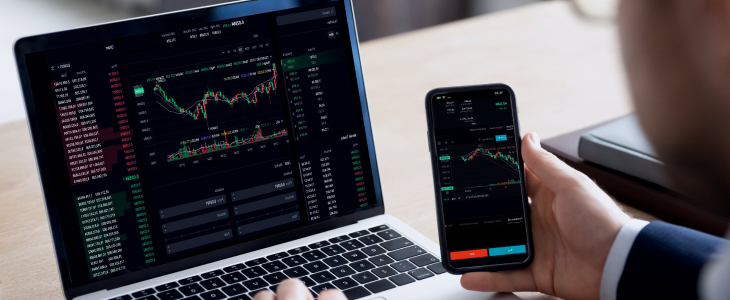
Forex trading, short for foreign exchange trading, is the act of buying and selling currencies on the foreign exchange market with the aim of making a profit. It is one of the largest and most liquid markets in the world, and understanding its mechanics can be key to building wealth. Whether you’re entirely new to this area or looking to enhance your trading strategies, this guide will break down the essential components of Forex trading and offer insights into how to get started effectively. If you are seeking more resources and information, visit forex trading explained FX Trading UZ.
Understanding Forex Trading
The Forex market operates 24 hours a day, five days a week, with an average daily trading volume exceeding $6 trillion. Unlike traditional stock markets, Forex trading does not have a centralized exchange; instead, it relies on a network of banks, brokers, and financial institutions. The market allows traders to exchange one currency for another, often taking advantage of fluctuations in currency values.
Currency Pairs
In Forex trading, currencies are traded in pairs. Each pair consists of a base currency and a quote currency. For example, in the currency pair EUR/USD, the Euro (EUR) is the base currency, while the US Dollar (USD) is the quote currency. When a trader buys this pair, they are essentially buying Euros with US Dollars, anticipating that the Euro will increase in value against the Dollar.
Types of Currency Pairs
- Major Pairs: These include the most traded currencies globally, such as EUR/USD, USD/JPY, and GBP/USD.
- Minor Pairs: These are pairs that do not involve the US Dollar, such as EUR/GBP and AUD/NZD.
- Exotic Pairs: These pairs consist of a major currency paired with a currency from a developing economy, like USD/TRY (Turkish Lira).
How Forex Trading Works
Forex trading involves speculating on the relative prices of currencies. When a trader expects that a currency’s value will rise, they will buy the pair; conversely, if they expect the value to fall, they will sell it. The profitability of these trades hinges on the price movements between currencies.
Leverage in Forex Trading
One of the defining features of Forex trading is the ability to use leverage. Leverage allows traders to control a larger position with a smaller amount of capital. For instance, with a leverage ratio of 100:1, a trader with $1,000 can control a position worth $100,000. While leverage can amplify profits, it can also magnify losses, making risk management strategies essential.
Order Types
In Forex trading, understanding order types is crucial to executing trades effectively. Some common order types include:
- Market Orders: An order to buy or sell a currency at the current market price.
- Limit Orders: An order to buy or sell a currency at a specific price or better.
- Stop Orders: A type of order that triggers a market order once a certain price is reached, often used to limit losses or to lock in profits.
Essential Trading Strategies
Successful Forex trading requires the implementation of effective strategies. Here are a few commonly used strategies:

Day Trading
Day trading involves opening and closing trades within the same day. Day traders capitalize on small intraday price movements, requiring strict discipline and quick decision-making skills.
Swing Trading
Swing trading involves holding positions for several days or weeks to benefit from expected price swings. Traders analyze short to medium-term trends and often use technical analysis to identify potential entry and exit points.
Scalping
Scalping is a high-frequency trading strategy where traders aim to profit from small price changes. This strategy requires a deep understanding of market conditions and fast execution.
Technical Analysis and Indicators
Technical analysis involves studying historical price data to forecast future price movements. Traders utilize a variety of charts and technical indicators, such as:
- Moving Averages: Indicators that smooth price data to identify trends over specific time frames.
- Relative Strength Index (RSI): A momentum oscillator that measures the speed and change of price movements to identify overbought or oversold conditions.
- Bollinger Bands: Indicators that consist of a middle band (SMA) and two outer bands that signify standard deviations above and below the SMA, helping traders identify volatility and price levels.
The Importance of Risk Management
Risk management is crucial in Forex trading as it determines how much a trader is willing to lose on a single trade. It includes techniques such as:
- Setting Stop Loss Orders: Automatically selling a currency when it reaches a certain price to limit losses.
- Diverse Portfolio: Avoiding overexposure to one currency pair to mitigate risk.
- Proper Position Sizing: Calculating the appropriate size of a position based on account equity and risk tolerance.
Choosing a Broker
When starting in Forex trading, choosing a reputable broker is vital. Consider factors such as the broker’s regulation, trading platforms offered, spreads, commissions, customer service, and educational resources. A well-regulated broker ensures your funds’ security and provides necessary support for your trading journey.
Conclusion
Forex trading can be a lucrative endeavor if approached with knowledge and discipline. Understanding the mechanics of the market, applying suitable strategies, and managing risks effectively are integral to achieving success. As you begin your Forex trading journey, remember that education is key, and accessing the right resources can greatly enhance your experience. With dedication and practice, anyone can navigate Forex successfully.
